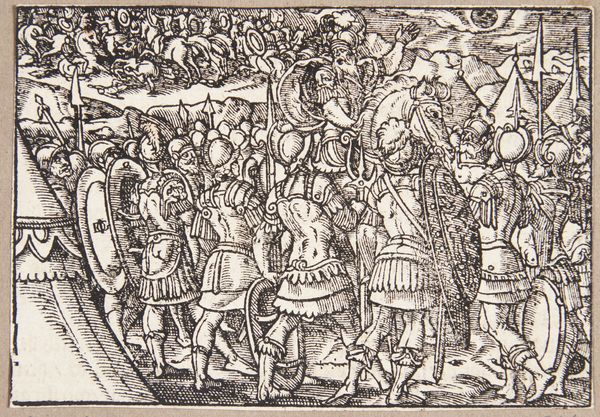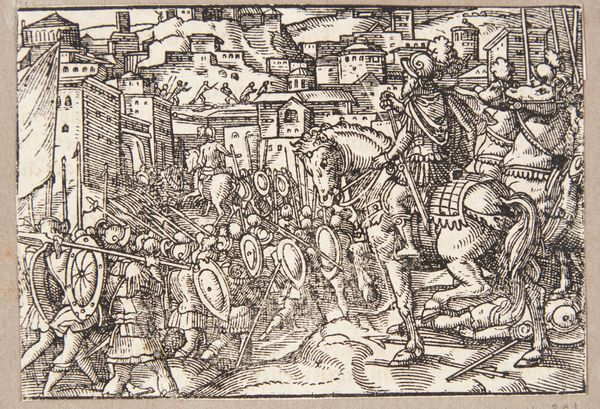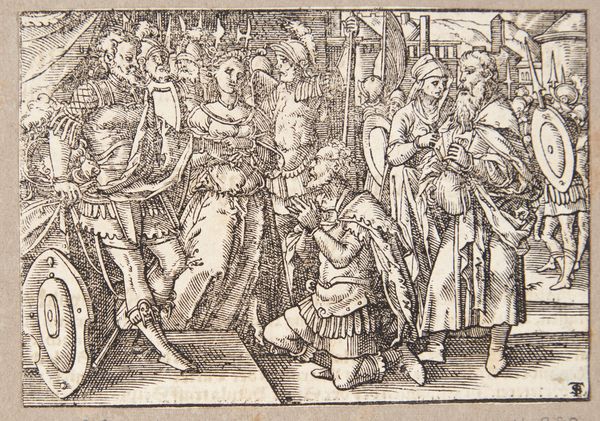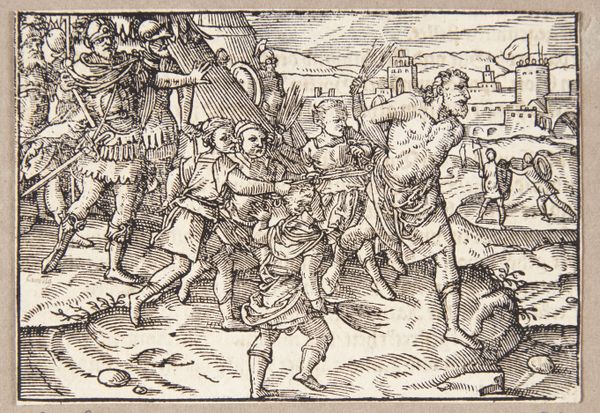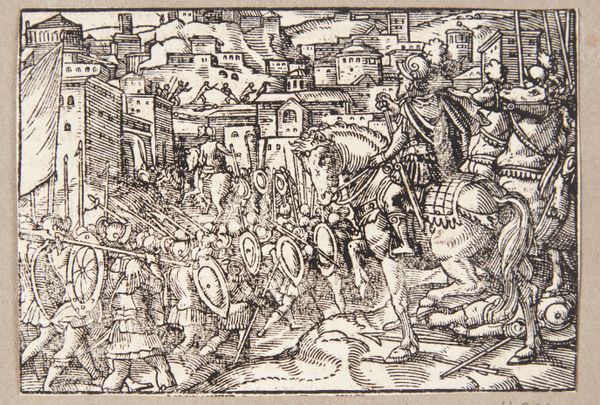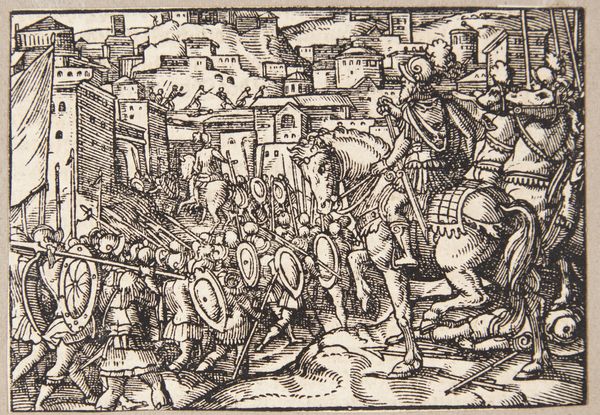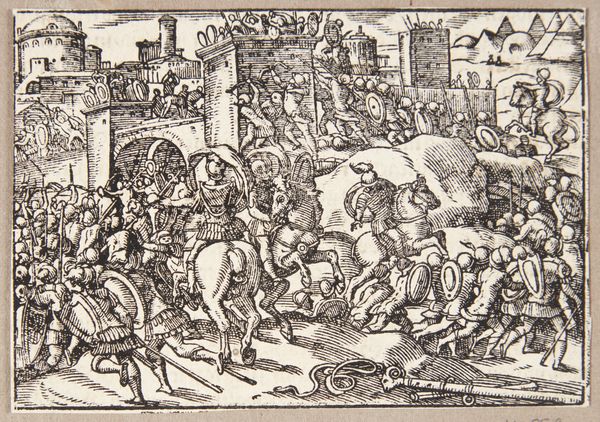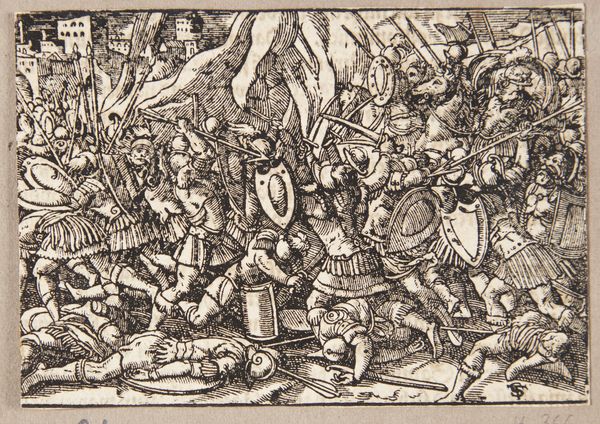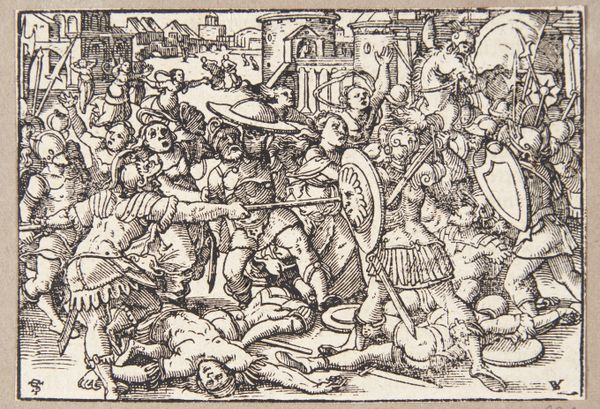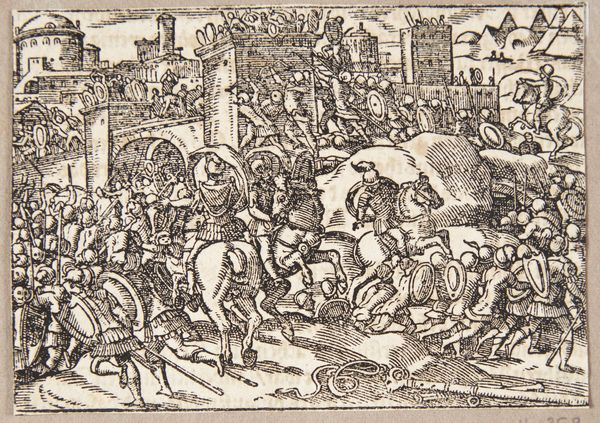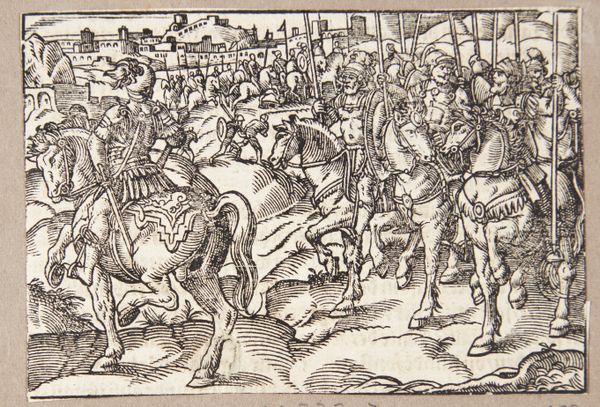
drawing, print, ink, woodcut
#
drawing
#
medieval
#
narrative-art
# print
#
ink
#
woodcut
#
history-painting
Dimensions: 75 mm (height) x 105 mm (width) (bladmaal)
Curator: Here we have Tobias Stimmer's "Sofonisba Kneeling and Entreating Masinissa," created in 1574. It's a woodcut, rendered in ink, a striking example of narrative printmaking from the late Renaissance. Editor: My first thought? It feels cramped, intense, almost stage-like. All those figures packed into a small space...the lines, the shading—they vibrate with nervous energy. I imagine a story of great emotional weight unfolding. Curator: Indeed. This work delves into themes of power, gender, and agency. It's inspired by Livy's "History of Rome," capturing the moment when Sofonisba, a Carthaginian noblewoman, implores Masinissa, a Numidian king allied with Rome, not to hand her over to the Romans as a prisoner. Her plea underscores the limited power women wielded, strategically leveraging their relationships within patriarchal structures. Editor: Right! Look at how Stimmer renders her posture; all that flowing fabric at her feet practically glued to the ground. It reads as vulnerability, doesn't it? The angles of the weapons almost fencing her into the scene, with a building looming darkly in the distance. Curator: The artist makes powerful use of contrast in both tone and composition. Sofonisba, partially unclothed in her subjugated position, visually counters the dense phalanx of soldiers and their towering shields that nearly box her in, raising interesting questions of what one has to lose when leverage, physical and otherwise, is scarce. It also reflects a complex historical lens, positioning the narrative within the broader tensions between Carthage and Rome. Editor: It is claustrophobic! I’m also fascinated by Stimmer’s attention to detail – the way the soldiers' armor is intricately drawn, that’s such an obsessive focus on their imposing appearance. There’s such depth and texture packed in there for something rendered with a stark medium. Curator: A testament to Stimmer’s skill as a draughtsman. The use of woodcut also reflects a deliberate artistic choice that emphasizes graphic clarity to serve as historical document for wider audiences and is, simultaneously, imbued with the period’s anxieties around power, gender and conflict. It continues to generate dialogue concerning such issues, even centuries after its creation. Editor: This piece sparks all sorts of conversations. Art like this can feel so incredibly modern, with complex layering, as much as it echoes historical power struggles and art practices. Thank you for opening this artwork up!
Comments
No comments
Be the first to comment and join the conversation on the ultimate creative platform.
